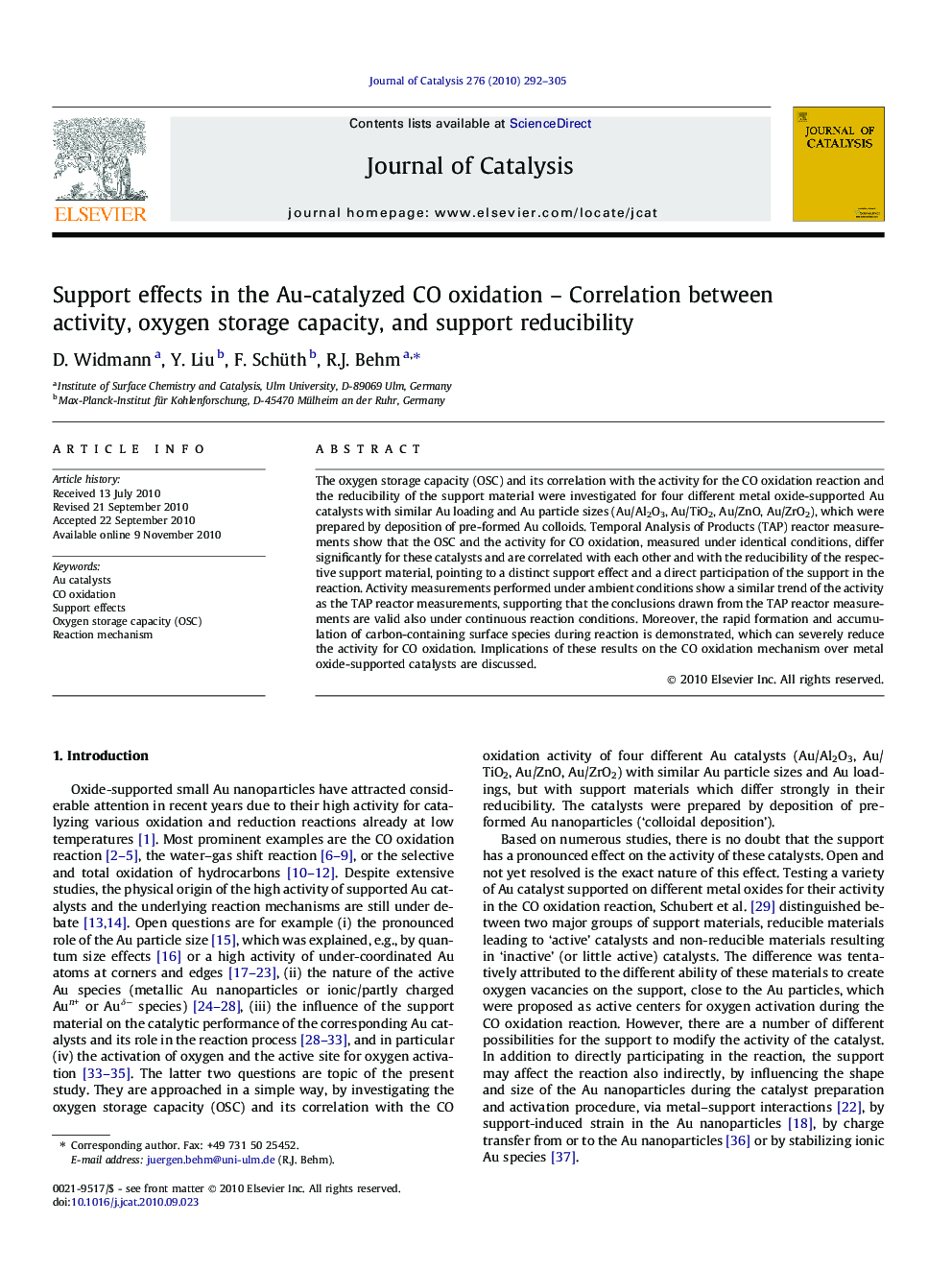| Article ID | Journal | Published Year | Pages | File Type |
|---|---|---|---|---|
| 61932 | Journal of Catalysis | 2010 | 14 Pages |
The oxygen storage capacity (OSC) and its correlation with the activity for the CO oxidation reaction and the reducibility of the support material were investigated for four different metal oxide-supported Au catalysts with similar Au loading and Au particle sizes (Au/Al2O3, Au/TiO2, Au/ZnO, Au/ZrO2), which were prepared by deposition of pre-formed Au colloids. Temporal Analysis of Products (TAP) reactor measurements show that the OSC and the activity for CO oxidation, measured under identical conditions, differ significantly for these catalysts and are correlated with each other and with the reducibility of the respective support material, pointing to a distinct support effect and a direct participation of the support in the reaction. Activity measurements performed under ambient conditions show a similar trend of the activity as the TAP reactor measurements, supporting that the conclusions drawn from the TAP reactor measurements are valid also under continuous reaction conditions. Moreover, the rapid formation and accumulation of carbon-containing surface species during reaction is demonstrated, which can severely reduce the activity for CO oxidation. Implications of these results on the CO oxidation mechanism over metal oxide-supported catalysts are discussed.
Graphical abstractWe demonstrate a clear correlation between the oxygen storage capacity (OSC) and the activity for CO oxidation for four different oxide-supported gold catalysts, which differ in the reducibility of the oxide but have similar Au loadings and Au particle sizes. This points to a direct participation of the support in the reaction, confirming the earlier qualitative concept of ‘active’ and ‘inert’ oxides.Figure optionsDownload full-size imageDownload high-quality image (137 K)Download as PowerPoint slide
